Obsessive-Compulsive Disorder (OCD) is often misunderstood. It’s more than just hand-washing or being neat. If you find yourself overwhelmed by unwanted thoughts and compelled to do things repeatedly to feel safe or “right,” you may be living with OCD.While OCD is diagnosed as one condition in the DSM-5, mental health professionals recognize that it can show up in many different ways, called subtypes or themes. These types of OCD describe the obsessions and compulsions you may experience. Familiarizing yourself with the different types of OCD can help you understand what’s going on in your mind and take the first step toward managing your symptoms with scientifically-proven techniques.
What are obsessions and compulsions in OCD
Obsessions are recurrent, intrusive, and unwanted thoughts, images, or urges that cause anxiety or distress. You don’t want them, yet they feel stuck in your mind.
Examples of obsessions:
- “What if I harmed someone without realizing it?”
- “What if I left the stove on and caused a fire?”
- “Is this thought a sin?”
Compulsions are repetitive behaviors or mental acts you feel driven to perform in response to the obsession to reduce anxiety or prevent something bad from happening. They often provide short-term relief and reinforce the OCD cycle over time.
Examples of compulsions:
- checking locks, appliances, or emails repeatedly
- washing hands or cleaning excessively
- mentally repeating phrases or prayers
A note on diagnosis
While you may identify with one or more of these themes, the DSM-5 doesn’t officially classify types of OCD. Your diagnosis will focus on the presence of obsessions and compulsions, along with how much they impact your daily life.
Your online therapist may use specifiers to better understand how you relate to your OCD experiences.
These specifiers give more detail for your therapist that can guide support strategies for OCD:
- With good or fair insight: You recognize that your obsessive thoughts and compulsive behaviors are inaccurate or likely exaggerated, even if they feel true and real.
- With poor insight: You struggle to see that your OCD thoughts and behaviors may be unreasonable. You might feel sure that they reflect reality, even when others disagree.
- With absent insight/delusional beliefs: You firmly believe your OCD fears are genuine, even when there’s clear evidence against them. In this case, the OCD beliefs may be experienced as absolute facts.
- Tic-related OCD: This specifier applies if you have a current or past history of a tic disorder (like Tourette’s). Tic-related OCD often starts earlier and may involve more sensory-focused or compulsive movements.

The 11 most common OCD subtypes (themes)
1. Contamination OCD
Contamination OCD centers around intense fears of germs, toxins, or being emotionally or spiritually contaminated. The anxiety is so strong that it leads to compulsive actions aimed at avoiding or neutralizing perceived danger.
Obsessions: Germs, bodily fluids, chemicals, emotional contamination
Compulsions: Excessive washing, avoiding public places or physical contact, mental cleansing rituals
2. Checking OCD
Checking OCD subtype involves overwhelming fears that you might have caused harm, made a mistake, or overlooked something important. These thoughts often trigger a cycle of checking behaviors to relieve the anxiety you are experiencing.
Obsessions: Fear of harm, responsibility, doubt over actions
Compulsions: Repeated checking of locks, appliances, health signs, or messages
3. Symmetry and order OCD
Are you drawn to arranging things until they feel right? Or do you get anxious when things appear out of place? Symmetry and order OCD may be the theme you’re living with. The focus here is achieving a sense of balance and harmony.
Obsessions: Need for things to be even, balanced, symmetrical
Compulsions: Arranging, aligning, counting, tapping, repeating until things feel right
4. Hoarding OCD
Hoarding-related OCD centers around the fear of discarding something that could be useful, sentimental, or important in the future. The clutter can lead to intense distress and significantly interfere with your daily life.
Obsessions: Fear of losing something important, distress about discarding things
Compulsions: Saving, avoiding organization, acquiring multiples of the same item
5. Intrusive thoughts OCD (“Pure O”)
This subtype includes disturbing, unwanted thoughts that may feel completely out of character. Even though no physical compulsions are visible, the mental rituals used to neutralize these thoughts are just as powerful.
Obsessions: Violent, sexual, or blasphemous thoughts
Compulsions: Mental rituals, avoidance, reassurance seeking, reviewing memories
6. “Just right”/Perfectionism OCD
“Just right” or perfectionism OCD involves a constant need for things to feel perfect or complete. If something feels off or unfinished, it can trigger distress until a sense of internal balance is restored.
Obsessions: Discomfort or anxiety unless things feel perfect
Compulsions: Repeating actions, adjusting until it feels “just right”

7. Relationship OCD (ROCD)
This form of OCD brings persistent doubts and fears about your romantic relationship. You may question your feelings or whether your partner is truly “right” for you, even when things seem fine.
Obsessions: Doubts about your partner or the relationship
Compulsions: Reassurance seeking, testing feelings, comparing to others, mentally reviewing moments
8. Harm/Responsibility OCD
You may experience overwhelming fears that you could unintentionally hurt others or be responsible for terrible outcomes. These fears can dominate your decision-making and day-to-day behavior.
Obsessions: Fear of causing harm by accident or omission
Compulsions: Confessing, retracing steps, checking the news or body signs
9. Moral or scrupulosity OCD
This theme centers around fears of being morally wrong or spiritually impure. You might fear committing sins or being punished for bad thoughts, leading to compulsive efforts to feel morally “clean.”
Obsessions: Fear of sinning or being immoral
Compulsions: Excessive praying, confessing, avoiding certain topics or media
10. Health OCD
Also known as hypochondria-related OCD, this theme focuses on fears that you have or will develop a serious illness. The anxiety leads to compulsive behaviors aimed at reassurance.
Obsessions: Fear of serious illness, misdiagnosis, or symptoms
Compulsions: Googling symptoms, seeking medical reassurance, body-checking
11. Magical thinking OCD
Magical thinking OCD makes you believe that your thoughts or small actions have the power to cause or prevent unrelated outcomes. You may feel immense responsibility for preventing harm through rituals.
Obsessions: Belief that thoughts/actions can influence unrelated events
Compulsions: Counting, tapping, mental rituals, avoiding certain numbers or words
How is OCD diagnosed?
Diagnosing OCD is a multi-step process that examines what you’re experiencing and how much it affects your daily life. Since OCD doesn’t have a lab test or brain scan that can confirm it, mental health professionals use structured evaluations and clinical tools to make an accurate diagnosis.
Here’s what the diagnosis process for OCD often includes:
- Clinical interview: Your online therapist will ask about your current thoughts, behaviors, and experiences, including when they began and how they affect your life. They may also discuss your family history and any related challenges you’ve faced.
- Yale-Brown Obsessive Compulsive Scale (Y-BOCS): This is a widely used and validated questionnaire that helps assess the severity and frequency of your obsessions and compulsions.
- Differential diagnosis: Many conditions can overlap with OCD, including generalized anxiety disorder (GAD), post-traumatic stress disorder (PTSD), depression, and tic disorders. Your online therapist will work to rule out these and confirm whether OCD best explains your symptoms.
- Insight level and specifiers: As part of the diagnosis, your online therapist may assess your insight (whether you understand your illogical thoughts) and whether your OCD is tic-related, which can guide how your care is managed.
Getting an accurate diagnosis is an important step toward understanding how to manage OCD. With the right tools and support, making meaningful progress and regaining control over your thoughts and behaviors is possible.

OCD symptom management plan
Regardless of the subtype or theme, the most effective way to manage OCD is through Cognitive Behavioral Therapy (CBT), particularly a specialized technique within CBT called Exposure and Response Prevention (ERP). This approach focuses on teaching your brain that you can experience discomfort without needing to act on compulsions, which breaks the cycle that keeps OCD going.
A strong OCD management plan usually includes:
- Psychoeducation: Learning how OCD works, including what keeps it going, gives you clarity and reduces shame. Understanding the OCD cycle is the first step toward change.
- ERP (Exposure and Response Prevention): This involves gradually exposing yourself to obsessional triggers in a safe and controlled way while resisting the urge to perform your compulsions. It helps retrain your brain to tolerate uncertainty and anxiety.
- Cognitive strategies: These strategies involve challenging unhelpful beliefs tied to your obsessions, like “If I think it, it must be true” or “I must prevent bad things from happening.”
- Mindfulness techniques: While not a replacement for ERP, mindfulness can help you observe your thoughts without reacting to them, making ERP more effective.
- Relapse prevention planning: Learning how to recognize early signs of OCD flares and having a plan in place to respond helps maintain your progress over the long term.
An example of ERP for OCD
ERP helps you slowly face your obsessions without performing compulsions. Over time, your brain learns that you can tolerate the anxiety and that the feared outcome doesn’t come true. This process builds confidence and weakens OCD’s grip.
Example: If you’re afraid of contamination, ERP might involve touching a doorknob and not washing your hands immediately afterward. As you repeat this with support, the fear decreases, and your sense of freedom grows.
ERP is considered the gold standard for OCD management, supported by clinical research:
- Foa et al. (2005). Biological Psychiatry
- Pauls et al. (2014). Nature Reviews Neuroscience
Find the support you need with Makin Wellness
Understanding the types of OCD that may describe your compulsions and obsessions is just one part of the puzzle. With the right support and tools, you can change your relationship with your thoughts and gain control over your life.
Experiencing OCD compulsions can prevent you from getting the help you need. Online therapy with Makin Wellness can help you connect with an online therapist while maintaining comfort and safety in your own space.
Online therapy gives you a private, consistent space to:
- Learn about your OCD
- Practice ERP with guidance
- Build practical coping tools
- Set goals that reflect your values
You deserve to feel empowered in your mental health journey. And help is here when you’re ready.
Your Makin Wellness online therapist can help answer any questions you have about the OCD symptoms you are experiencing. Call us at (833)-274-heal or start here to schedule an appointment with one of our caring online therapists who are ready to help.
Sources:
The scientific and clinical information in this article is based on established research and diagnostic criteria from a unified body of peer-reviewed sources, including:
- American Psychiatric Association (2013). Diagnostic and Statistical Manual of Mental Disorders, Fifth Edition (DSM-5). Arlington, VA: American Psychiatric Publishing.
https://archive.org/details/APA-DSM-5 - Foa, E. B., et al. (2005). Randomized, Placebo-Controlled Trial of Exposure and Ritual Prevention, Clomipramine, and Their Combination in the Treatment of Obsessive-Compulsive Disorder. American Journal of Psychiatry, 162(1), 151–161.
https://www.med.upenn.edu/ctsa/assets/user-content/documents/Foa-ClomipramineRCT05.pdf - Pauls, D. L., et al. (2014). Obsessive-Compulsive Disorder: An Integrative Genetic and Neurobiological Perspective. Nature Reviews Neuroscience, 15(6), 410–424.
https://europepmc.org/article/MED/24840803 - Cromer, K. R., et al. (2007). An Investigation of Traumatic Life Events and Obsessive-Compulsive Disorder. Behaviour Research and Therapy, 45(7), 1683–1691.
https://public.websites.umich.edu/~prestos/Consumption/pdfs/Cromeretal2007.pdf - Abramowitz, J. S., & Arch, J. J. (2014). Strategies for Improving Long-Term Outcomes in Cognitive Behavioral Therapy for Obsessive-Compulsive Disorder: Insights From Learning Theory. Cognitive and Behavioral Practice, 21(1), 20–31.
https://jonabram.web.unc.edu/wp-content/uploads/sites/2968/2013/09/Abramowitz-Arch-2013-Improving-CBT-for-OCD.pdf - Hertenstein, E., et al. (2021). Mindfulness-Based Cognitive Therapy for Unmedicated Obsessive-Compulsive Disorder: A Randomized Controlled Trial With 6-Month Follow-Up. Frontiers in Psychiatry, 12, 661807.
https://www.frontiersin.org/journals/psychiatry/articles/10.3389/fpsyt.2021.661807/full









This Post Has 9 Comments
OCD is explained very well. Thanks
Hello Shivam, thank you for your feedback!
This post is incredibly informative! The explanation of the 4 different types of OCD is thorough and easy to understand. The writing style is clear and the information is presented in a way that is both educational and approachable. I appreciated the insight into a complex and often misunderstood condition. Thank you for shedding light on OCD and for providing such a valuable resource.
Hi Soniya, thank you for your feedback!
Can chewing noise be an ocd
Thanks so much for your question! Having difficulty with chewing noises can be included under OCD or other related disorders, but that isn’t an exclusive categorization. A licensed therapist can better determine that based on other criteria that would be covered within a counseling session.
Have a nephew who is terrified of germs but doesn’t have excessive cleaning behaviours.In fact he refused to shower.Doesnt sound like typical OCD.
Can someone develop more than one type of OCD?
Great question, Walter. You can have one main type of OCD or have symptoms of multiple types of OCD. The type of OCD can change over time, as well. The fact that a person’s OCD can morph over time makes it even more important to get to the root of the OCD through therapy and not just treat the symptoms.